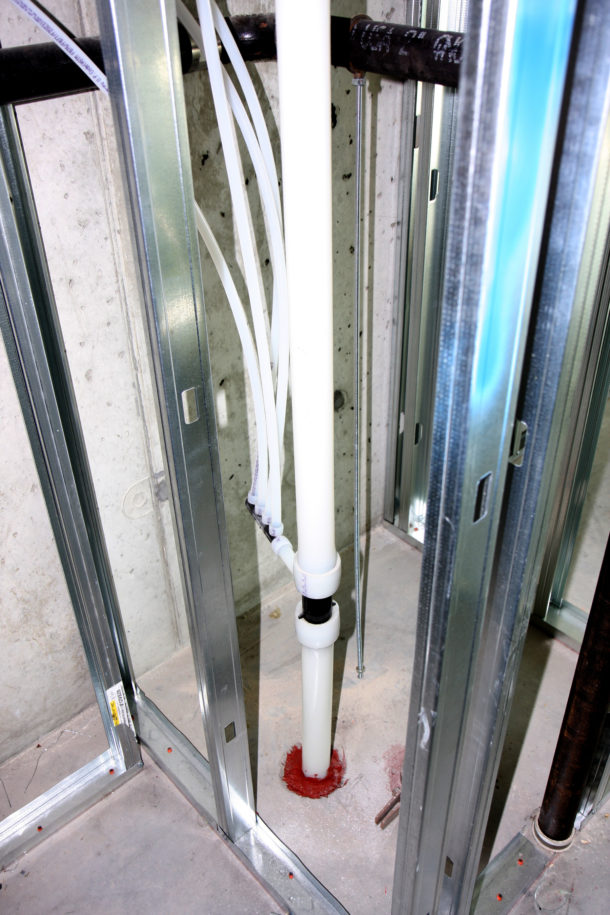Industry Report Examines Plastic Pipe Materials and Health Impacts The latest report from Safe Piping Matters covers upcoming research showing commonly used plastic pipe materials can release significant amounts of microplastics and nanoplastics into plumbing systems. It also provides a look at current studies examining how these and other tiny plastic particles affect human health Read more
safety

Industry Report Examines Plastic Pipe Materials and Health Impacts
The latest report from Safe Piping Matters covers upcoming research showing commonly used plastic pipe materials can release significant amounts of microplastics and nanoplastics into plumbing systems. It also provides a look at current studies examining how these and other tiny plastic particles affect human health, including impacts on the gut, lungs, brain, and reproductive organs, as well as increasing risks from related toxins and pathogens.

“The explosion of plastic pollution around the world continues to contaminate drinking water, food, and air with microplastics,” said Paul Hagar, Executive Director of Safe Piping Matters. “Our report shows why the plumbing industry needs to study the ways in which plastic pipe materials contribute to microplastic contamination.”
The report summarizes a study from Polish researchers who analyzed materials taken from water-transmission systems and found that plastic materials degrade “relatively quickly” as they age. Scans of the interior pipe surfaces showed peeling and flaking that released plastic particles into the water, adding to humans’ already significant exposure to ingested microplastics.
Plastic Pipes Microplastics and Health Impacts Report
The report also looks at issues such as chemical leaching in addition to shedding of micro- and nano- particles from common plastic pipe materials PVC (polyvinyl chloride), PE (polyethylene), PEX (cross-linked polyethylene), and CPVC (chlorinated polyvinyl chloride). It then reviews effects that medical studies have begun documenting on humans and/or lab animals, describing associations with cancer, cell death, tissue inflammation and damage, disruption of nervous function, reduced fertility, and other impacts.
“Architects, engineers, and contractors who care about the health and safety of building occupants should consider these issues when selecting piping materials,” says Hagar. “Emerging research does not support industry claims of rigorous testing standards and product safety.”

With the new normal brought about by the global pandemic, high-performance building is now focusing on the safety of occupants. This is especially true for healthcare buildings. So now, in addition to ensuring the systems you design and install not only perform reliably and meet project schedules and budgets, you also must ensure they can Read more
With the new normal brought about by the global pandemic, high-performance building is now focusing on the safety of occupants. This is especially true for healthcare buildings. So now, in addition to ensuring the systems you design and install not only perform reliably and meet project schedules and budgets, you also must ensure they can support a superior indoor environment. How can contractors meet these new demands while also staying efficient and profitable in every project? Start by looking at the piping materials.
A domestic water system has the responsibility of bringing water from the main source and distributing it throughout the building. When that water is running throughout all the piping, it has the potential to pick up various contaminants depending on the type of system it is running through.
For example, copper, brass, and steel systems can corrode and experience scale buildup over time. That corrosion and scale buildup can impact the drinking water in a system — affecting everything from taste and odor to even bacterial formation.

Other piping systems, such as CPVC, use glues, cements and other chemicals to join the pipe to the fittings. These chemicals are not organic in nature and have the potential to pose risk if they seep into the drinking water system.
The safest material for drinking water requires a durable system that is immune to corrosion and scale buildup and does not use chemicals for joining purposes. This is why PEX is quickly becoming the professionals’ choice for commercial domestic water piping projects.
PEX, a flexible, durable, polymer piping product, has been used successfully in homes and businesses for decades. It naturally resists corrosion and scale buildup and offers several different joining methods, all of which do not use chemicals — or open flame.
Best of all, because PEX is flexible, it greatly reduces the amount of connections needed in a system. This gives you the benefit of a high-performing, durable, long-lasting solution that also helps you with labor time and installation costs.
To learn more about the different PEX piping solutions available for healthcare projects, visit uponor-usa.com/healthcare.

PrimeSource Building Products, an international distributor of building materials for residential and commercial needs, has launched GRX Gloves, a brand-new line of quality gloves designed with new levels of comfort and fit to promote hand safety and value. The glove lines include GRX Cold Weather, GRX Industrial, GRX Professional and GRX Tradesman. GRX Read more
PrimeSource Building Products, an international distributor of building materials for residential and commercial needs, has launched GRX Gloves, a brand-new line of quality gloves designed with new levels of comfort and fit to promote hand safety and value.
The glove lines include GRX Cold Weather, GRX Industrial, GRX Professional and GRX Tradesman.
GRX gloves will be available through the PrimeSource network of pro-contractor supply location and pro-supply locations like 84 Lumber and BMC.
See the glove live at www.grxgloves.com

